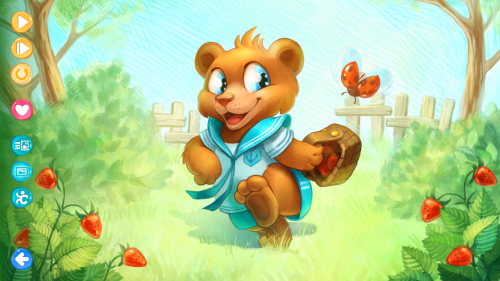The Making of Learn English with Rhymes
Sergey Kopov shared his experience of launching Learn English with Rhymes, a children’s game that he developed independently, and that immediately got featured on App Store and Google Play.

Image Credit: Learn English with Rhymes
Learn English with Rhymes is an educational app that assists children in studying the English language through memorizing and singing merry tunes. The application was released for iOS at the end of August.
Sergey, who works as Head of Publishing at Herocraft, had been developing the app in his own time for nearly six months. He explains that his labor “had been, like, spread thinly throughout this period”, and that he had “actually spent only two months programming”.
A project developed in Unity had cost Sergey $4000. This is not the cost of his time and effort but that of freelancers: $1,5k had been outsourced to graphic designers and artists, the same amount was spent on localization into 8 languages, and the rest money bought him sound and voiceover.
Getting his project featured was Kopov’s plan from the very beginning of development. “For children’s apps, featuring in one of few available ways to attract users (actually, the only alternative is using a brand). So, we aimed at getting featured,” reveals Sergey.
To increase chances of getting featured, the developer had promised to Apple that Learn English with Rhymes would be a temporary iOS exclusive, localized it into most popular languages and built a version of the game for Apple TV. Also, “all relevant proprietary technologies had been integrated”.
As result, the project received featuring from Apple on the main page in Russia, United Arab Emirates, India and – for a short duration – in Canada. The game never got featured in Germany, France, Italy, China and Japan, although localizations into these languages had been prepared. Sergey is also upset that his game has not been included in either of selections of language learning apps.

Featuring has resulted in 11 million views (of the app’s icon), 200 thousand clicks, 20 thousand installs and… only $200 worth of additional content purchases.
After iOS release, Kopov launched OBT of his project on Google Play. Participation in beta is an opportunity for an app to get featured as a project in “early access”. The decision was justified: Learn English with Rhymes on Google was included in a selection fitting to its nature.
The project had been featured for three weeks, since September 15. It had been downloaded 4,500 times and attracted 2000 active users. “In the beginning, we had had 250 downloads daily. Later, that number increased to 350,” Sergey shares.
“We received $20, which is two times less than from App Store traffic in terms of downloads. At the same time, we received 50 reviews, which is 40 times more than on App Store in terms of feedback per user”.
Kopov concludes that “featuring of an app on the global scale in the category ‘preliminary versions’ provides for little traffic, while customer feedback, in this case, is rich”.
The developer is not discouraged by initial low income. There has simply been no further promotion. As of now, Sergey is waiting for a full release on Google Play. It should also be noted his motivation was personal all along – he wanted to make a game for his own child.

“Commercial success never was a goal of this project. I am well aware of how difficult it is to profit from an educational application for children. Our primary intention was to create a new means for our child to learn English because we couldn’t find a good one among alternatives. Some parents spend $4000 on carriages for their children, while we decided to spend it on knowledge”.